In 1942 the Allies mounted a disastrous raid on Dieppe to see if it was feasible to capture an enemy held port to help with the invasion. Among the many lessons learned was the fact that the German defences around the Channel ports, the so called Atlantic Wall, were very heavily defended especially around the beaches that were most favourable to the Allies invasion plans. In the planning stages of ‘Overlord’ the invasion of Europe, it soon became obvious that in order to supply the huge amount of supplies and troops that would be needed once a bridgehead had been established after the initial invasion, the Allies would need a port. Actually they would need two, one for the Americans and one for the British. Since the Germans occupied the ports that were the most useful to the Allies, the only answer was to build their own. But where? The planners came up with a revolutionary, some said insane, idea. Why not prefabricate the harbours in England and then simply tow them across to Normandy. The Mulberry Harbour as the project became known (The name Mulberry was chosen at random, but since a mulberry tree grows quickly to a great size, the name was seen as a good omen) became the greatest military engineering project in history, but at the beginning the problems seemed insurmountable. Luckily Churchill took a personal interest in the project and squashed all doubts. He famously said “bring me the best solutions, do not waste time talking about the problem’s, they will take care of themselves. With Churchill brooking no delays, the project swiftly got underway.
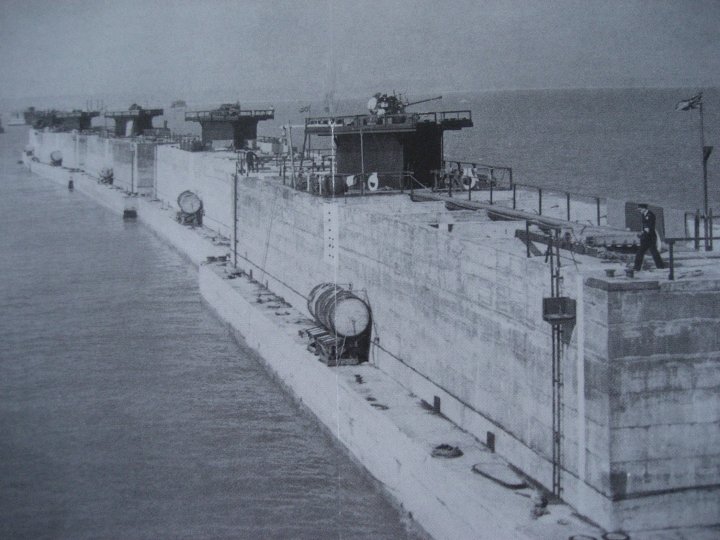
To get a grip on the size of the project think of the Port of Dover which the Mulberry Harbours were supposed to replicate. During the Second World War the Port covered 310 hectares, and was capable of discharging 1250 vehicles and 600 tonnes of supplies a day. Dover had taken seven years to construct, but the Mulberry harbours were designed and built in just one year. The main elements of the harbour were essentially an outer ring of sunken block ships, which were also used as workshops, temporary accommodation, and huge concrete Phoenix caissons to take the brunt of the sea and weather. Inside this ring were floating quays with pontoon roadways to the shore. Once the bridgehead was in position all of these elements had to be towed across the Channel and installed in less than two weeks.
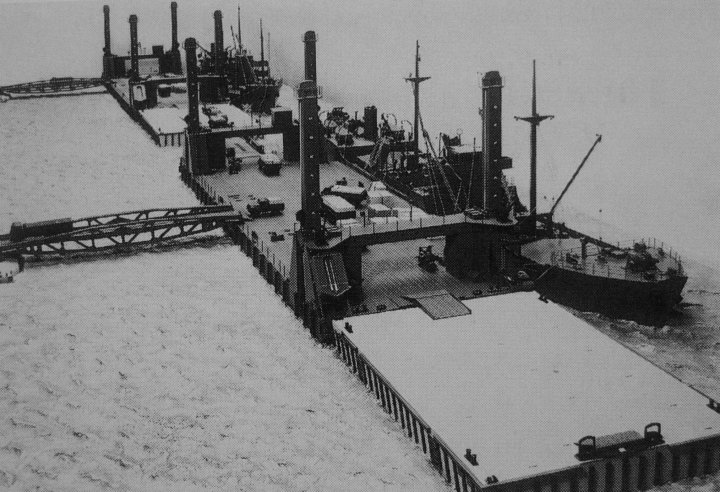
The building of the Phoenix caissons caused the greatest headaches because every boatyard and jetty in the country was already fully occupied with building the landing craft for the invasion. In the end special basins were excavated along the banks of the Thames in which the caissons could be constructed. The plan called for 146 caissons, but 212 were eventually constructed in six different sizes to accommodate the different types of seabed upon which they were to be sunk. Some of the surplus, were later used to repair French ports that had been destroyed in the fighting, and to prop up sea defences around the coast and the dykes at Walcheron in Holland. The largest caissons were sixty metres long by seventeen metres wide, eighteen metres high, and displaced over 6000 tonnes . There were over 8000 men involved involved in the project, and each caisson took four months to build. Their construction consumed 600,000tonnes of concrete, 31000 tons of steel, and a million and a half square metres of corrugated steel sheets.
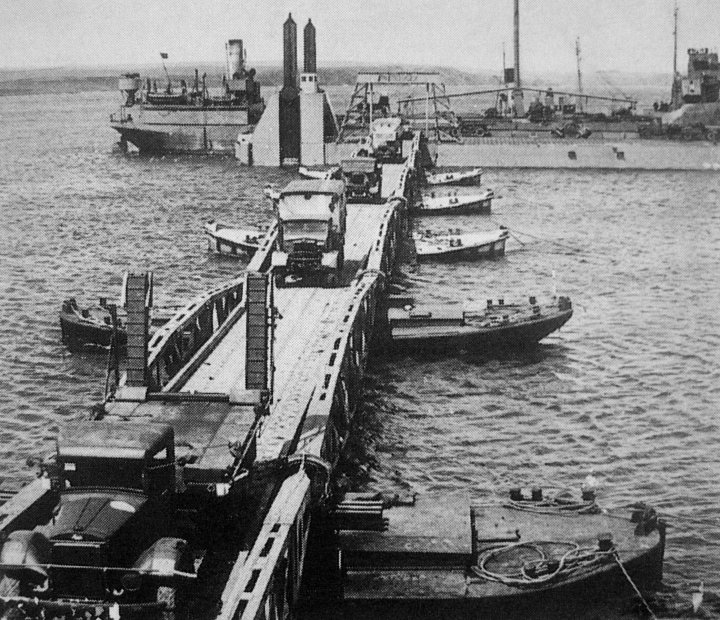
By the 6th of June all was ready and the block ships set off soon after the invasion force so that they would be sunk in position ready for the arrival of the Phoenix caissons and the other elements of the harbour which was scheduled for the 8th of June. It took over 130 tugs to tow all the parts into place, and soon the installation of the Mulberry Harbours commenced. The American harbour Mulberry A , was stationed off the Omaha invasion beach, and Mulberry B off the beach at Arromanches. The work went on night and day. Each caisson had its own anti aircraft battery to protect them as well as barrage balloons and a thick artificial fog to disguise the whole enterprise. Up until now the Germans had no idea what was going on, but by June 16th the penny finally dropped and they launched ferocious airstrikes against the harbour. It hardly made a dent. The work carried on without a pause, and soon the Mulberry Harbour was up and running right on time.
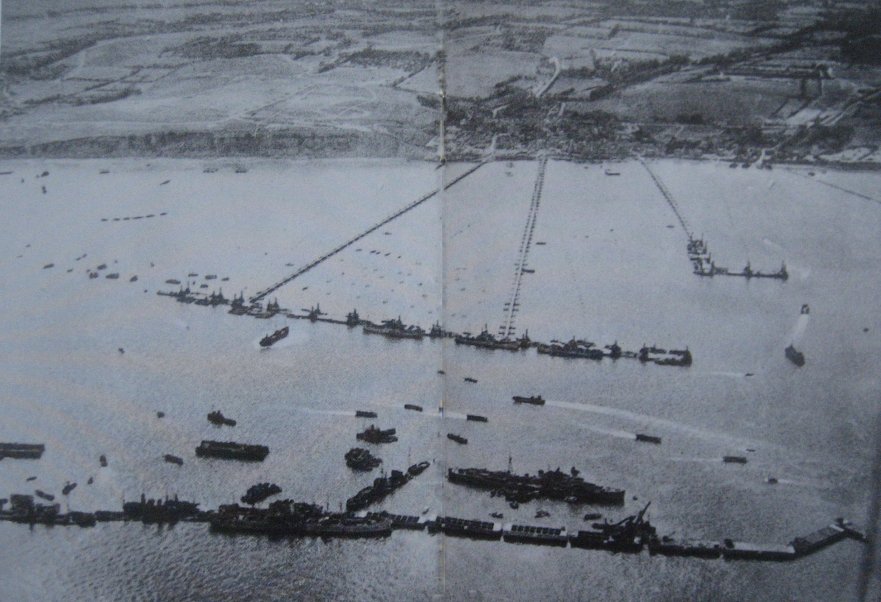
Designed to last only 90 days Mulberry B survived savage storms and was still operating well into November. Their usefulness however, had now been over taken by events. Roads around Arromanches had deteriorated to a point where they were unsuitable for heavy transport, and Belgium and Dutch ports, now recaptured by the Allies, were much closer to the forward battle zone. A lot of port equipment was wasting away in the Mulberry’s that could be much better employed in the ports opening further up the coast, so a decision was taken to strip the Mulberry harbours of all useful equipment, and abandon them to the sea.
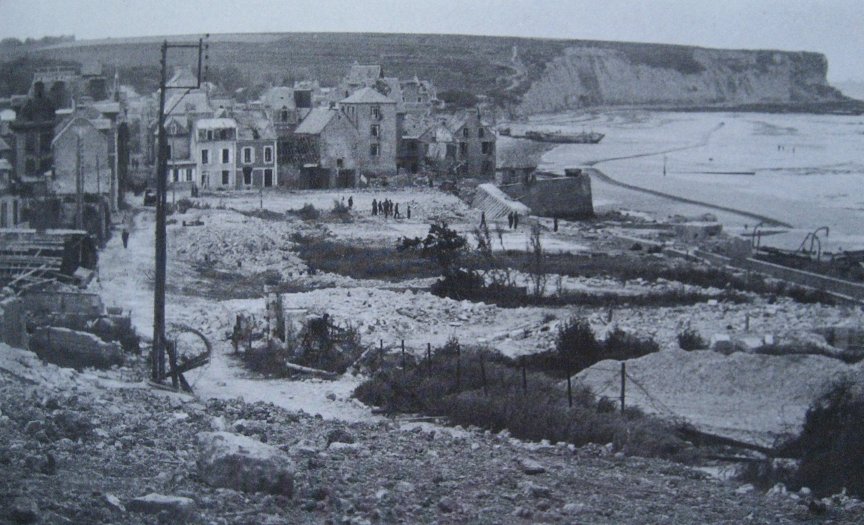
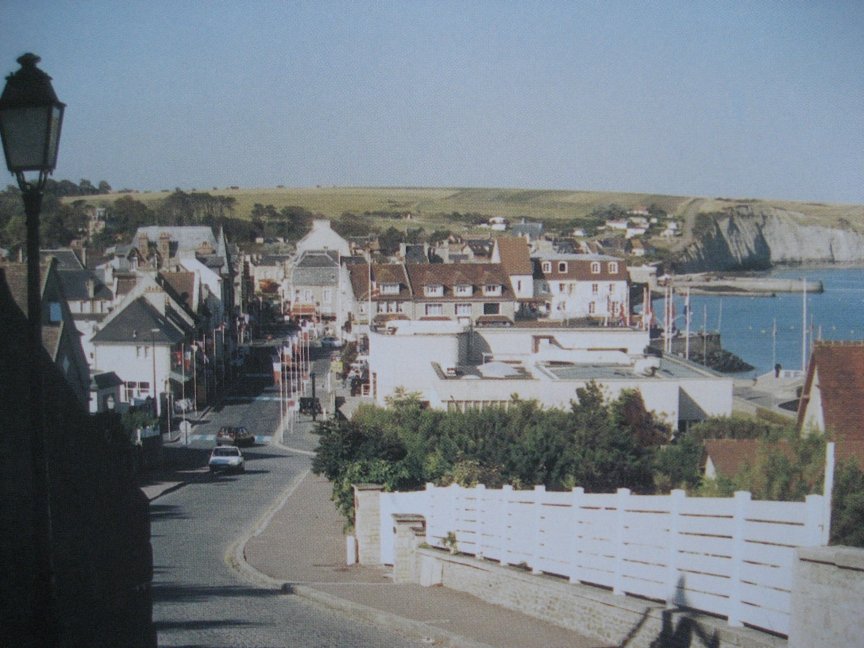
Arromanches, before and after. The resturant is on the extreme right of the photo
During the war the town of Arromanches was in the thick of the fighting, and was badly damaged, but today much of the town has been rebuilt as it was, and is a delightful place to visit. At low tide the brooding mass of the ruined Mulberry Harbour dominates the beachscape, but still leaves plenty of space for building sand castles and going for bracing walks. It is quite something to walk out to some of the nearer ruins and realise their sheer size, and if you venture onto the cliff tops you can quite easily see what’s left of the outer ring of the Mulberry, the huge Phoenix caissons seemingly impervious to the pounding of the sea over all these years.
Right at the corner of the beach is a Hotel with a great little restaurant, and in the evening you can have a meal there overlooking the beach. Usually some of the caissons are lit up, and after your meal, as you stroll along the promenade in the half dark it’s not hard to imagine the sound of shells exploding, bullets whipping by, and the shouts and cries of the troops as they thunder ashore bound for glory or oblivion. Thank God they did, but the sacrifice was high as the nearby cemeteries attest. Even so, without the Mulberry Harbour things could have been a lot bloodier. To get a proper perspective on the Harbour and the Invasion in this area, go to the excellent museum just up from the beach and afterwards don’t forget to linger on the nearby invasion beaches to give thanks to all those brave men. At Arromanches you can purchase a great little guide book:Arromanches-History of a Harbour.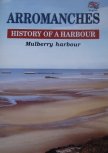

Chas Groves says
Can I suggest another reason for the name Mulberry Harbours. If you turn to the Gospel of Luke, chapter seventeen, verse six.
“If you have faith as small as a mustard seed, you can say to this mulberry tree,’Be uprooted and planted in the sea’ and it will obey you.
V.Kent says
My Grandfather was one of the warrant officers on the Harbour construction there.
He had great faith.
Was a good and solid guy who loved the army…and served bravely there and much more besides